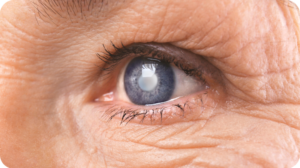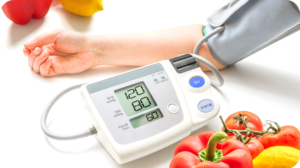Do you shop exclusively in the center of the supermarket? You know, all those aisles jam-packed with boxes, bags, and cans of chemical-laden, ready-to-eat taste treats? Is your idea of a meal opening a can of readymade pasta in sauce, or shaking out cereal into a bowl?

You’re not alone. Healthy eating can be a challenge. But studies continue to show the evidence of the oversized reward that a balanced, nutritious diet offers. The latest findings indicate that it’s not just your waistline you should worry about. Your brain may be suffering from poor nutrition just as much.
The Facts on Food
A recently published study following 10,000 Brazilians over ten years found decreased brain function in participants who consumed 20 percent or more of their calories in the form of processed food. In fact, they averaged a cognitive decline of a whopping 29 percent compared to subjects who ate healthy.
Processed food is just that—any edibles made more shelf stable and attractive with the addition of salts, fats, sugars, or chemicals, and then packaged for consumers. Processed foods can typically travel thousands of miles from manufacturing facility to grocery store, and will often last months if not years on the shelf or in the cupboard.
The Impact
There are several ways processed foods negatively impact the brain. Start with increasing fat stores. Processed foods tend to be rich in carbohydrates and refined sugars. Those lead to overeating and an increase in fat stores, including fat deposits around major organs, which has been tied to damage in the brain’s structure.
Another common ingredient in processed foods—from boxed breakfast cereals to jars of spaghetti sauce—is refined sugar, and lots of it. High blood levels of sugar can, over time, fatigue the pancreas’ ability to produce enough insulin, and lead to prediabetes and damage throughout the body. That damage extends to the brain; it’s no coincidence that mental confusion is a symptom of advanced or out-of-control diabetes and skyrocketing blood sugar. Excessively high blood glucose levels can, over time, even lead to brain shrinkage.
The cocktail of chemicals used to preserve and maintain the look and flavor of packaged foods do no favor to sensitive brain tissue. Some of those can damage neural pathways, impact brain cell growth and functioning, and significantly erode basic cognitive processes.
All that is not even taking into account the higher incidence of cancer, heart disease, and other major health problems associated with unhealthy diets. So the only question is: How do you modify your diet in a reasonable, achievable, and timely fashion?
Step by Step Away from Processed
Radical dietary changes rarely stick. Just look at the vast numbers of dieters who lose weight, only to regain it right back. The secret is small, permanent changes to the way you eat.
- Start with calorie intake. The average American eats more than 2,500 calories a day. Yet most people can live quite comfortably on 1,800 calories a day. Simply eating smaller portions and eliminating one habitual food (that afternoon candy bar, or morning donut from the company coffee room spread) can usually significantly reduce daily caloric intake.
- Make small swaps. Air-popped popcorn sprinkled with avocado oil and salt can be every bit as satisfying as a bag of potato chips. Even a packaged mix salad is better than a fast food meal. You don’t have to suddenly become a chef to make smart, healthy food swaps.
- Fluids for fullness. You’ll be less likely to impulse-snack if your stomach feels full. An easy way to get that feeling is with carbonated or warm fluids. Swap naturally flavored seltzers for your favorite soda, and have a couple cups of green tea in the afternoon to dial down cravings before dinner.
- Write it down. Perhaps the best way to shock yourself into adopting new ways of eating is to write down everything you eat for two or three days. A food journal is an in-your-face reality check (most of us are actually poor judges of how much and what we actually consume). It can inspire you to make commonsense changes.
Eating healthier doesn’t have to be an all-or-nothing proposition. Make changes one step at a time, one day at a time, one meal at a time. If you slide back into a bad habit, cut yourself some slack, and then get right back on track to smart food choices. Remember, you are what you eat, and so is your brain!







